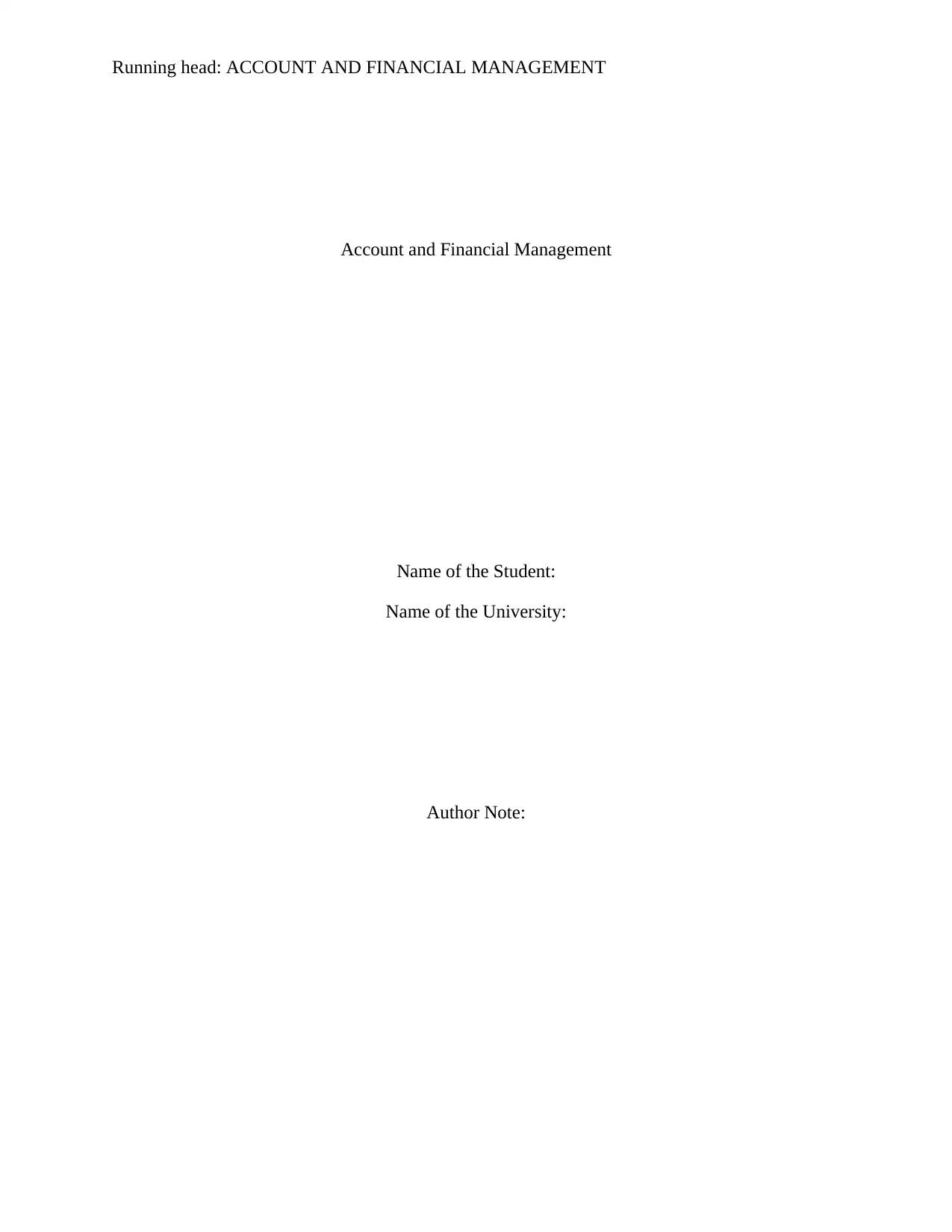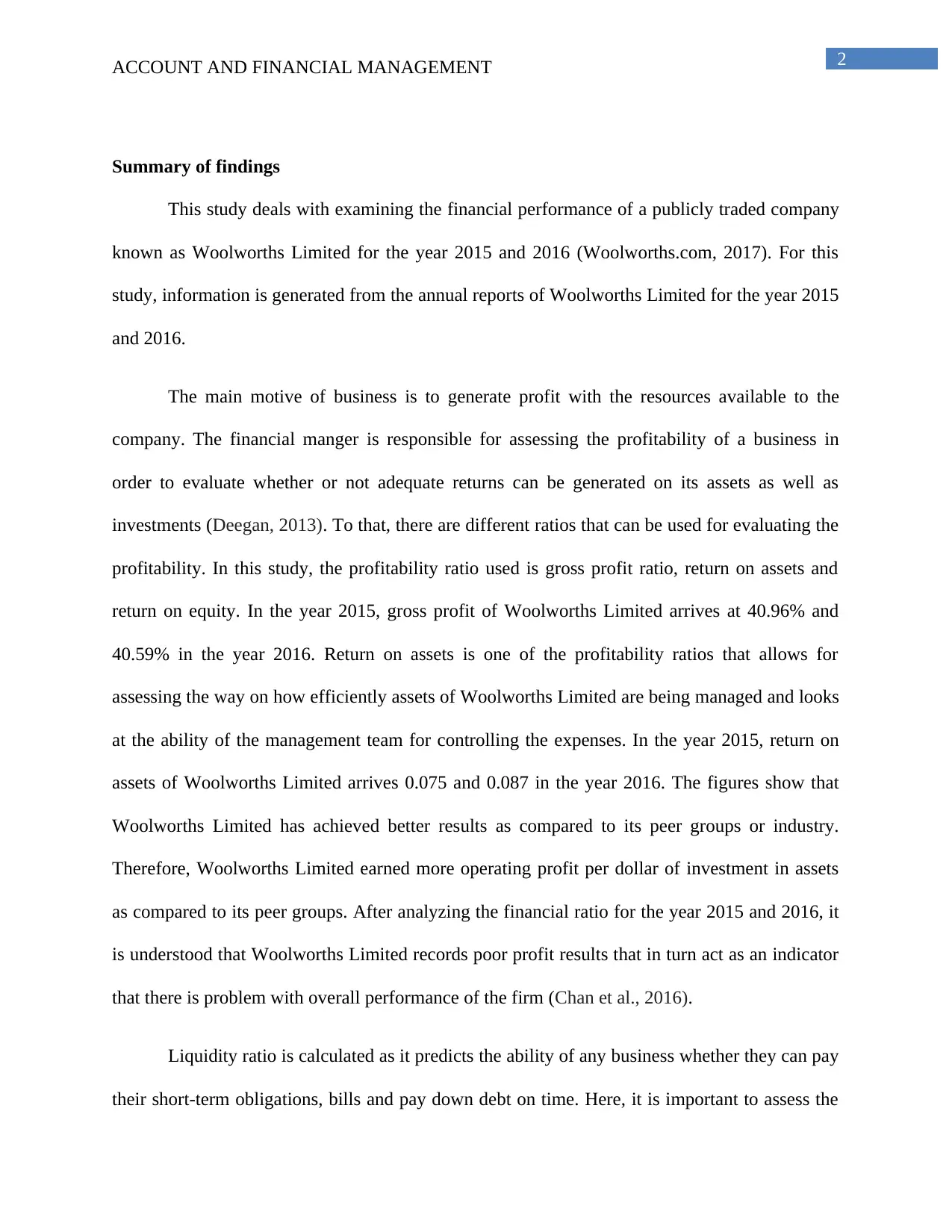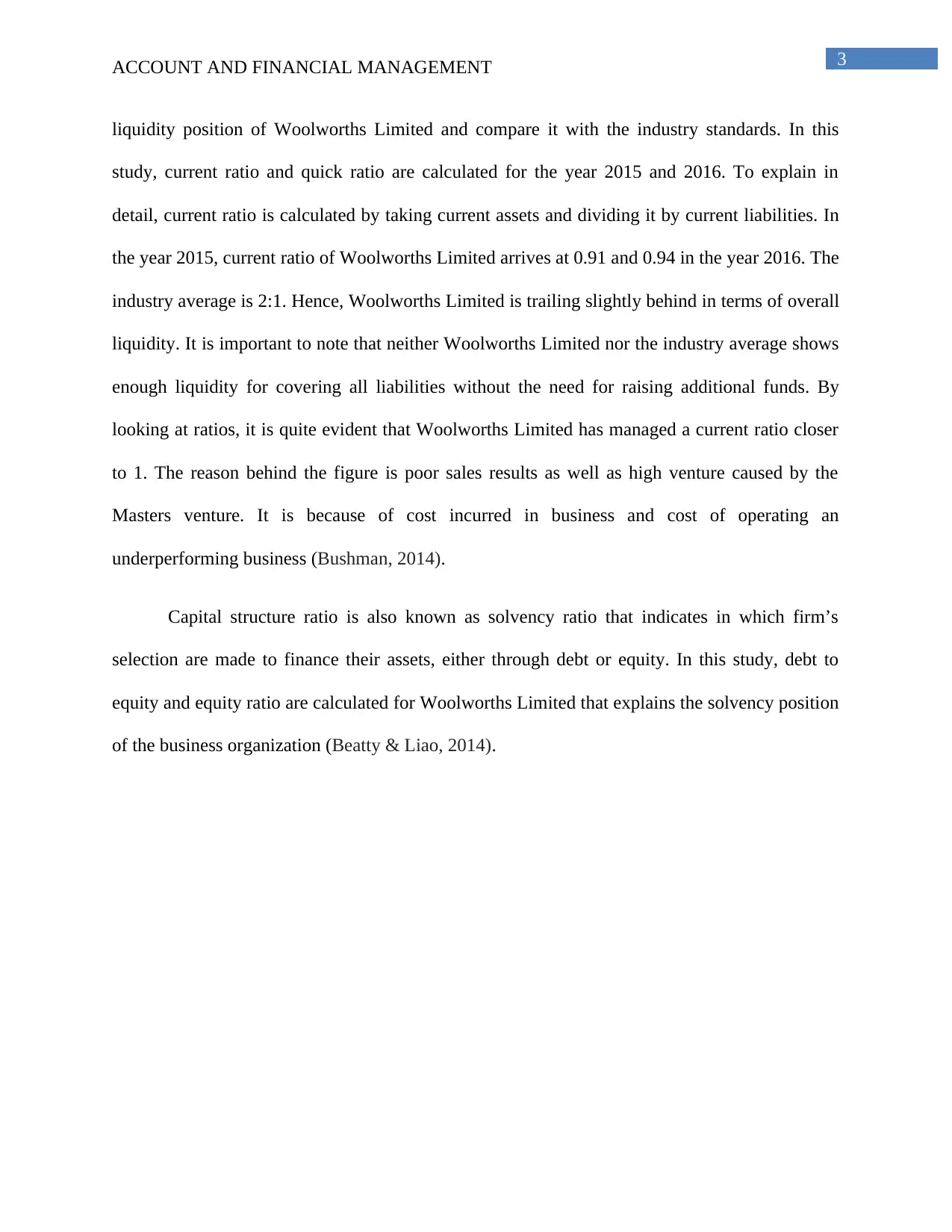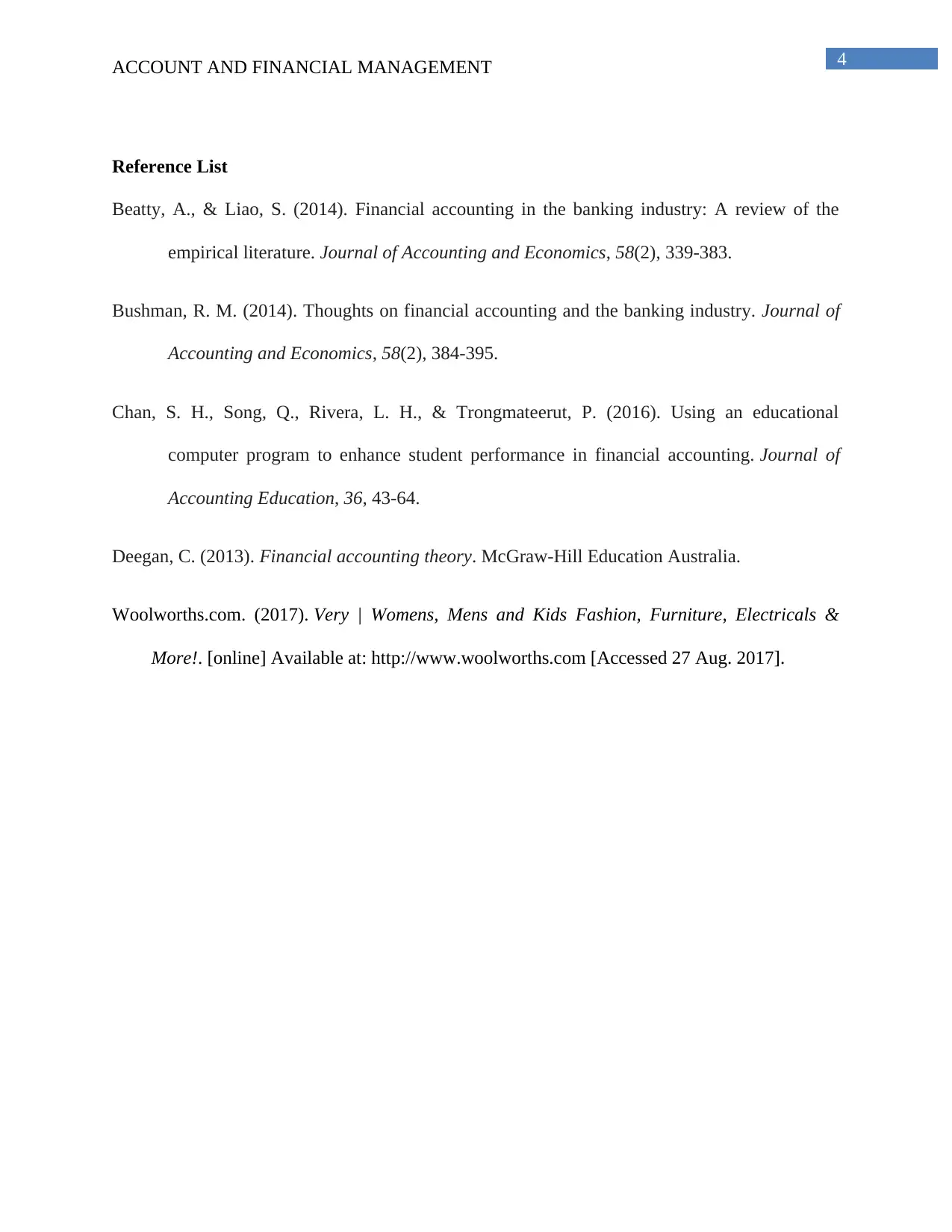Financial Performance Analysis of Woolworths Limited (2015-2016)
VerifiedAdded on 2020/03/01
|4
|788
|42
Report
AI Summary
This report provides a financial performance analysis of Woolworths Limited for the years 2015 and 2016. The analysis utilizes data from Woolworths' annual reports to assess profitability, liquidity, and capital structure. Profitability is evaluated using gross profit ratio, return on assets, and return on equity, revealing Woolworths' performance compared to industry peers. Liquidity is assessed through current and quick ratios, highlighting the company's ability to meet short-term obligations. Capital structure is examined using debt-to-equity and equity ratios to understand the company's financing choices. The study concludes that the company's financial performance records poor profit results that in turn act as an indicator that there is problem with overall performance of the firm and also discusses the impact of the Masters venture on the company's financial standing.
1 out of 4









![[object Object]](/_next/static/media/star-bottom.7253800d.svg)